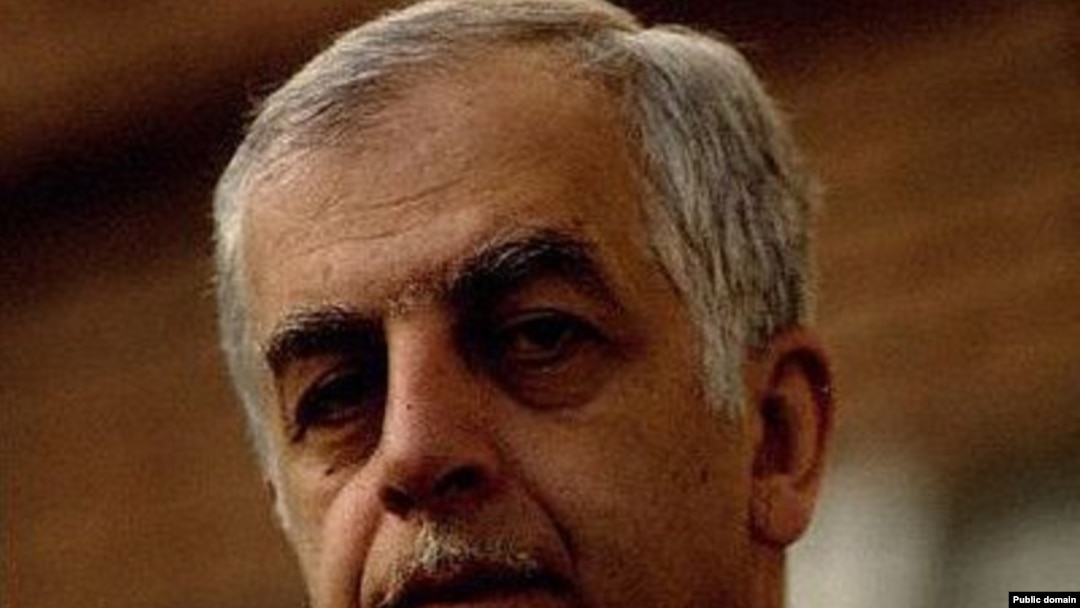TBILISI (Reuters) - Georgia has ordered an inquiry into the mysterious death of its first post-Soviet president, Zviad Gamsakhurdia, whose legacy still scars the country.
Gamsakhurdia, a former anti-Soviet dissident and Georgian nationalist, officially killed himself with a single gunshot to the head in December 1993, after leading a failed uprising to reverse his ouster two years earlier.
But some die-hard supporters say he was murdered, and mystery still surrounds his death in a village in western Georgia.
Parliament voted 78-1 to establish a commission to investigate his overthrow and death.
It appeared to be another attempt by the party of President Mikheil Saakashvili, which dominates parliament, to court those who revere Gamsakhurdia as the man who led Georgia to independence from the Soviet Union in 1991.
His detractors say his brief rule fanned nationalism, plunged Georgia into a civil war, and contributed to the pro-Russian regions of South Ossetia and Abkhazia breaking away.
Those wars returned to haunt Georgia in August last year when Russia crushed an assault ordered by Saakashvili on separatists in South Ossetia.
"The purpose of setting up this commission is to provide a legal and political assessment of the overthrow of the first Georgian president and his tragic death under strange circumstances," said opposition deputy Jondi Bagaturia, who proposed the bill.
Local media reports suggest the inquiry is part of an attempt to get Gamsakhurdia's son Konstantine to take up his vacant seat in parliament, splintering further an opposition alliance that led months of failed protests against Saakashvili this year.
Pro-Western Saakashvili, declaring Gamsakhurdia a statesman and patriot, instigated the return of his body to Georgia from Russia in April 2007 to be buried alongside other prominent Georgians in Tbilisi's Mtatsminda Pantheon.
The ousted president was first buried in western Georgia but then reburied in the southern Russian region of Chechnya when his widow moved there. That grave was later found empty, before Russian investigators discovered his remains in a grave in the Chechen capital, Grozny, in March 2007.
Gamsakhurdia fled Georgia in January 1992 after he was ousted in a coup, but returned to launch an uprising against the new government of former Soviet Foreign Minister Eduard Shevardnadze.
Shevardnadze was himself ousted in the 2003 Rose Revolution street protests which brought Saakashvili to power.
Gamsakhurdia, a former anti-Soviet dissident and Georgian nationalist, officially killed himself with a single gunshot to the head in December 1993, after leading a failed uprising to reverse his ouster two years earlier.
But some die-hard supporters say he was murdered, and mystery still surrounds his death in a village in western Georgia.
Parliament voted 78-1 to establish a commission to investigate his overthrow and death.
It appeared to be another attempt by the party of President Mikheil Saakashvili, which dominates parliament, to court those who revere Gamsakhurdia as the man who led Georgia to independence from the Soviet Union in 1991.
His detractors say his brief rule fanned nationalism, plunged Georgia into a civil war, and contributed to the pro-Russian regions of South Ossetia and Abkhazia breaking away.
Those wars returned to haunt Georgia in August last year when Russia crushed an assault ordered by Saakashvili on separatists in South Ossetia.
"The purpose of setting up this commission is to provide a legal and political assessment of the overthrow of the first Georgian president and his tragic death under strange circumstances," said opposition deputy Jondi Bagaturia, who proposed the bill.
Local media reports suggest the inquiry is part of an attempt to get Gamsakhurdia's son Konstantine to take up his vacant seat in parliament, splintering further an opposition alliance that led months of failed protests against Saakashvili this year.
Pro-Western Saakashvili, declaring Gamsakhurdia a statesman and patriot, instigated the return of his body to Georgia from Russia in April 2007 to be buried alongside other prominent Georgians in Tbilisi's Mtatsminda Pantheon.
The ousted president was first buried in western Georgia but then reburied in the southern Russian region of Chechnya when his widow moved there. That grave was later found empty, before Russian investigators discovered his remains in a grave in the Chechen capital, Grozny, in March 2007.
Gamsakhurdia fled Georgia in January 1992 after he was ousted in a coup, but returned to launch an uprising against the new government of former Soviet Foreign Minister Eduard Shevardnadze.
Shevardnadze was himself ousted in the 2003 Rose Revolution street protests which brought Saakashvili to power.


